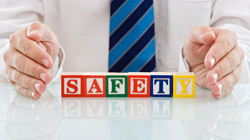By now, you are aware of potential dangers that face real estate agents when they are meeting clients, showing properties or hosting open houses, and in their cars. There is one more place to consider: the office where you work.
You can help safeguard your business’s (and your personal) property, and the safety of all who work in the office, with a few procedures and precautions:
- Know staff in other nearby businesses and be aware of their schedules.
- Ensure that all doors other than the main entrance are secured.
- Make certain windows are not obscured so that passersby can see in.
- Make sure there is a clear exit route from the service desk to the door.
- Never allow visitors to wander freely about the business. Have the person whom they want to see come to the front office area and escort the individual to the meeting area.
- Have a visitor log book and policy on issuing visitor tags that limit access to certain areas and hours of the day.
- If you encounter an individual while working late or alone, indicate to that person that you are not alone. Say something like, “My supervisor will be right with you and should be able to assist you.”
- Keep personal information private. Avoid discussing where you live, after-work or vacation plans in front of customers, new coworkers or anyone in general with whom you are not comfortable.
- Never leave valuables, purses or wallets tucked behind counters or on desks.
- Lock away personal letterhead and business cards to avoid use by unauthorized people.
- Mark equipment for easy identification in the event of theft or damage. Maintain an inventory of all marked items.
- Lock up audio/visual equipment when not in use.
- Secure spare and master keys in locked cabinets.
- Protect client information. Most offices keep sensitive personal information on their computers and/or in paper files—names, Social Security numbers, credit card or other account data—that identifies customers or employees. If this sensitive data falls into the wrong hands, it can lead to fraud or identity theft.
This article is part of the National Association of REALTORS®’ REALTOR® Safety Resources Kit.


